2018 Suzuki GSX-S750 First Ride Review
This one could be the new poster child for Less is More
We reject the accumulated knowledge of our forefathers at our own peril: Case in point, the 750cc inline-Four, the motorcycle that made Japan Japan nearly 50 years ago with the first Honda 750. We liked the GSX-S750 a lot when it was new in 2015, but it still lost out to the Yamaha FZ-09 in this comparison, due to various cost-cutting measures and a certain lack of refinement. Its screaming mimi of a high-revving powerplant was a big hit, though, and the rightness and lightness of the overall compact package was there from the beginning.
2018 Suzuki GSX-S750
| Engine | 19.0/20 |
| Suspension/Handling | 13.5/15 |
| Transmission/Clutch | 9.0/10 |
| Brakes | 9.0/10 |
| Instruments/Controls | 4.5/5 |
| Ergonomics/Comfort | 9.0/10 |
| Appearance/Quality | 9.25/10 |
| Desirability | 9.0/10 |
| Value | 9.5/10 |
| Overall Score | 91.75/100 |
More For Less: $8K Four Vs. $8.2K Triple Vs. $8.7K Twin + Video
For 2018, Suzuki has done right by the GSX-S, seriously upgrading something like 75% of its components – enough for them to claim it’s an entirely new motorcycle. Well, that (steel) frame looks the same as before (but there’s a cool new also-steel swingarm). And while we’re still using the same 2005 GSX-R750 engine cases, there’s enough “new” going on for Suzuki to claim eight more horsepower up top – 112.6 at 10,500 rpm. The claim for the previous version was 104.6, which worked out to 96.1 rear-wheel hp at 10,300 rpm on the MotoGP Werks dyno.
Part of that increased power is due to reduced pumping losses thanks to big new pentagonal holes in the cylinder block, but most of it must be down to all-new ECU programming along with a new, freer-flowing exhaust: This one runs, from idle to redline, much nicer than the previous bike did, and there really wasn’t much to complain about with the old one. Suzuki says the new exhaust boosts low- and mid-range power (it does), while new ten-hole fuel injectors provide better atomization for increased combustion efficiency. Basically, from smooth burbly-quiet idle to screaming redline, this engine runs like a rheostat and never seems to miss a beat.
There’s also a bigger airbox, tuned to provide enhanced auditory enjoyment of the four-cylinder symphony Suzuki claims as its heritage – the 180-crank version in particular, which needs no stinking balancers or weird crankshafts to add weight and dilute the experience. Finally, final-drive gearing is a bit shorter, to let you get into the upper registers that much quicker.
Lane-splitting home through L.A. traffic after a day in the mountains, it really was nice to note that the little screamer is also perfectly happy to pootle along below 2000 rpm and 30 mph in sixth gear, completely smoothly and quiet enough that you’d think you were riding an electric bike. Rolling it open from there gives strong-enough, jerk-free acceleration, and plenty more of it if you kick it down a gear or two.
In tight mountain-road going, the new bike is an even bigger hoot than before. Increased midrange power means you don’t need to flog it quite as hard to maintain momentum (but you still can if you want to, for maximum velocity), and when the tachometer bar gets to about 7500, there’s a new banshee wail I don’t recall the old bike having: Past about 8,000 rpm, the afterburner is truly lit, and keeping it that way is pure sportbike pleasure, thanks to the lubricious six-speed gearbox and new back torque-limiting clutch.
I’m personally on record as being a big fan of the GSX-S1000. All the big nakeds, with their excellent low-rpm lunge, are big fun on backroads, but you’re not getting the throttle all the way open so much on them. There’s something more rewarding about using more rpm, having to coordinate and execute more shifts while you deal with all the other slings and chipmunks the road throws at you. There’s a greater sense of mastery when you get it right on the 750, just because its reduced torque requires more rider participation.
Keeping the price down means you’ll learn to do it on your own; there’s no auto-blip downshifter to do it for you. It’s also fun to fan the clutch a little now and then to help things along, which picks up the 750’s front wheel a bit without making you feel like you’re about to loop out. Oh yeah, you’ve also got traction control now (three levels and Off), which it feels like you mostly don’t need on dry pavement but which is great if you live where it rains a lot.
Meanwhile, the 750’s reduced weight and gyro forces mean it feels way smaller and quicker-turning than any of the 1000s. Our scales said 464.7 pounds for the 2015 bike; Suzuki’s claim for the new one is 465. Wait, what’s that? Suzuki says the GSX-S1000 in fact weighs a few pounds less than the 750 (aluminum frame) and even has 0.2-inch less trail. For a graphic demo of how much gyroscopic force a crankshaft has, ride the two bikes back to back. The bike with the 46mm stroke turns much quicker than the one with the 59mm one. (The 1000 also wears a 190mm rear tire instead of the 750’s 180/55 ZR-17.)
The smaller bike’s four-banger also runs smoother all the time as it zings up toward 10,000 rpm and beyond, with less vibration than the 1000. And while a little of the 1000’s on-throttle abruptness occasionally happens, it’s never as big an issue, just because of the smaller bike’s reduced spinning mass.
The fact that the 750 is just as large as the 1000 means it’s every bit as comfortable pressed into commuter or sport-tourer service, with, again, reduced engine vibes coming through its tapered aluminum handlebar. The S21 Bridgestone tires are specifically made for the 750, with a slightly lighter, more compliant carcass which aids the 4.7 and 5.4 inches of front/rear wheel travel in serving up a smooth, compliant ride. “Affordable” suspension keeps getting better. It only hurts over big sharp bumps. My rear end has no issues with the bike’s well-padded seat, and its ergonomics are perfectly natural for 5-foot-8 me, and neutral at 80 mph cruising speed.
Speaking of aluminum handlebar, not only is the GSX-S reskinned, Suzuki outfitted it with quite a few tasteful bits they’re more often known for leaving out. The levers and pedals are stylishly black anodized, the gold fork tubes have black preload adjuster knobs on top, the new swingarm and its new chain adjusters add visual interest… and the new radial-mount front brake gives the bike a serious performance-forward look.
Suzuki is lately all about affordable new models to “address evolving tastes while retaining championship DNA.” We’re talking the new SV650, new V-Stroms in 650 and 1000 sizes… the Stroms aren’t exactly standards, but they’re close, and Suzuki says sales of its standards are up 72% since last June. Maybe the biggest improvement to the 750 is that it’s now for sale in California, which should by itself boost its sales significantly.
Cheapskate by necessity that I am, the GSX-S1000 appealed to me largely due to its tremendous 145-hp bang-for-buck value (we’ll have more on the 2018 GSX-S1000s soon), but I have to say I think I’m liking the new and greatly improved 750 even better – and I’m trying to think where you’re going to get a genuine 100-hp bike as well turned-out and put-together as this one, for $8,299? There’s the $8,399 Kawasaki Z900 which I have not ridden. Hmmm, here’s the new Honda CB650F… the Yamaha FZ-09’s a bit pricier and still weird looking. Ducati’s new Monster 797 is more money and less powerful.
Ahhhh, it looks like what we need is a good old-fashioned Middleweight Standard Bike Shootout, but if you haven’t go time to hang around waiting for that to happen, I can tell you that you cannot, and will not, go far wrong with this sweet little Suzuki GSX-S750.
2018 Suzuki GSX-S750
+ Highs
- Smoothest running GSX ever
- All systems go, including new brakes
- Details befitting a more expensive motorcycle
– Sighs
- Too bad you don’t get the S1000’s light aluminum frame
- ABS is only available on the blacked-out Z version
- Whatever happened to helmet locks? Oh, wait, there are two under the passenger seat.
2018 Suzuki GSX-S750 Specifications | |
|---|---|
| Engine | 749 cc, 4-stroke, liquid-cooled, 4-cylinder, DOHC |
| Bore x Stroke | 72.0 mm (2.83 in) x 46.0 mm (1.81 in) |
| Compression Ratio | 12.3 : 1 |
| Fuel System | Suzuki Fuel Injection with SDTV |
| Starter | Electric |
| Lubrication | Wet sump |
| Traction Control | Suzuki Advanced Traction Control |
| ABS | GSX-750Z Only: Suzuki Anti-lock Brake System |
| Transmission | 6-speed constant mesh |
| Clutch | Wet, multi-plate type |
| Suspension Front | Inverted telescopic, coil spring, oil damped |
| Suspension Rear | Link type, single shock, coil spring, oil damped |
| Brakes Front | Nissin, 4-piston, Disc, twin |
| Brakes Rear | Nissin, 1-piston, Disc single |
| Front Tires | 120/70ZR17M/C (58W), tubeless |
| Rear Tires | 180/55ZR17M/C (73W), tubeless |
| Fuel Tank Capacity | 16.0 L (4.22 US gallons) |
| Colors | GSX-750: Metallic Triton Blue / Glass Sparkle Black and Pearl Mira Red GSX-750Z: Metallic Mat Black No.2 |
| Ignition | Electronic ignition (Transistorized) |
| Headlight | 12V 60/55W H4 |
| Tail Light | LED |
| Overall Length | 2125 mm (83.6 in.) |
| Overall Width | 785 mm (30.9 in) |
| Wheelbase | 1455 mm (57.2 in.) |
| Ground Clearance | 135 mm (5.3 in.) |
| Seat Height | 820 mm (32.2 in.) |
| Curb Weight | GSX-750: 465 lbs. GSX-750Z: 469 lbs. |
| Warranty | 12 month unlimited mileage limited warranty. Coverage extension and additional benefits are available. |
More by John Burns



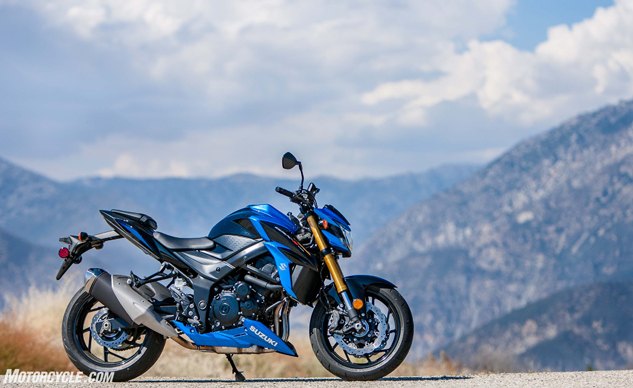
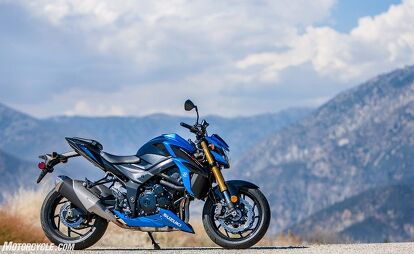































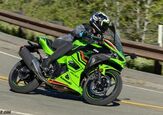
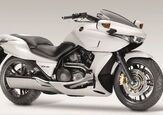

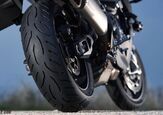
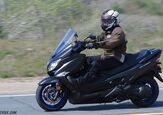

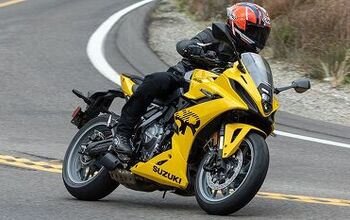
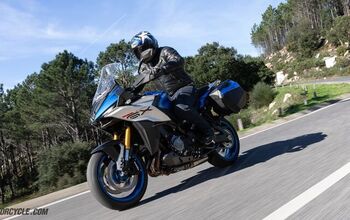
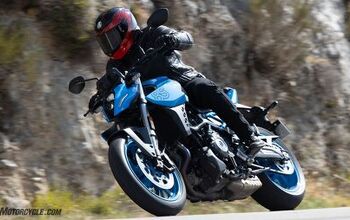
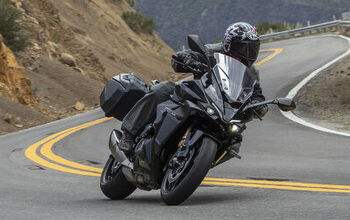
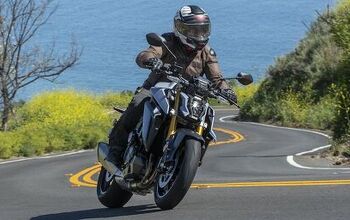
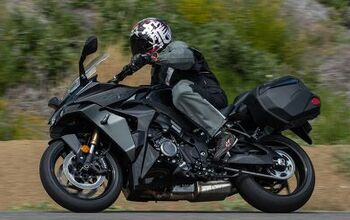
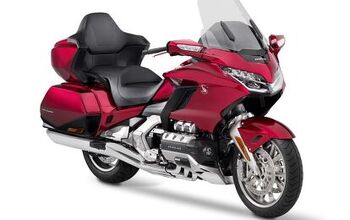
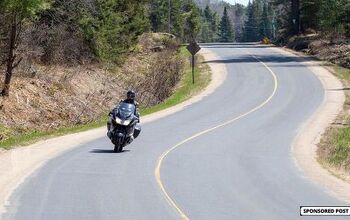
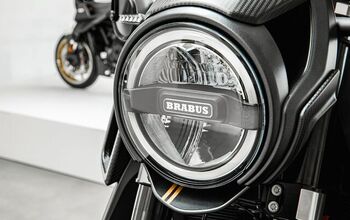

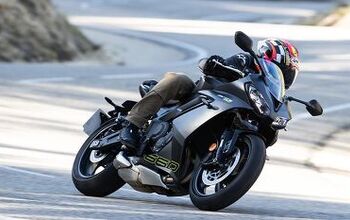
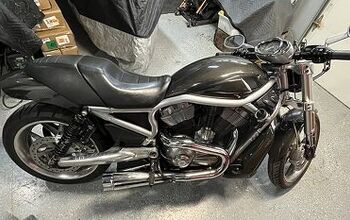
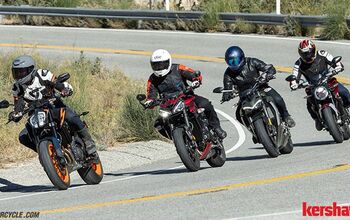
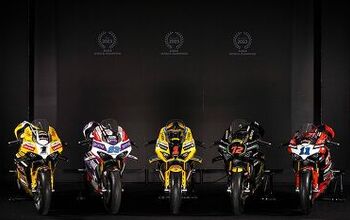
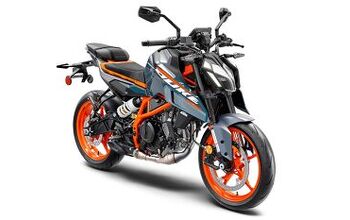

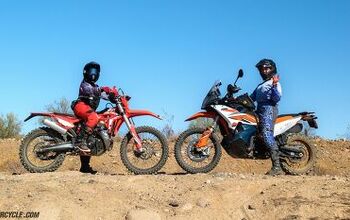
Comments
Join the conversation
They have to give this thing a Kawasaki style weight reduction. If they could get this down under 400 ready to ride it would be something to talk about.
Good to see Suzuki pull this together performance-wise. But it looks like a cheap plastic alien.